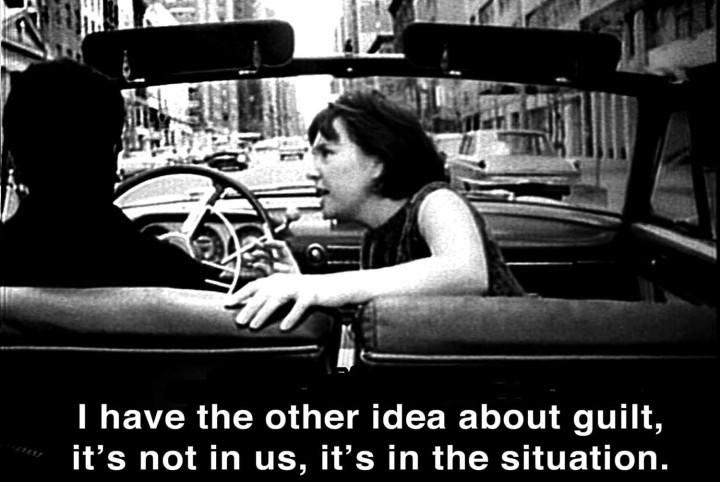“The Poet and the Critic, and the missing,” curated by Public Fiction, forms a running commentary on MOCA’s permanent collection from the vantage of the museum’s storefront: venue, comprised of two distinct installations of visual and written work, two film screenings and an online publication.
The image of a tangent, featured on the website component of the show, aptly indicates the nature of this dialogue, which often bears an oblique relation to the ostensible source material. One is tempted to step back a bit and suggest a comparison between Public Fiction’s overall curatorial project of exploring the possibilities of the exhibition as a medium and collage.
The latter, after all, has had an indisputable art history since at least the work of Picasso and Braque, precisely because it draws upon materials external to canonically defined art, such as newsprint, found photographs and even furniture. Politically, this relates to the conflict between sameness and diversity that plays out over the history of modernism, as its attempts to attain universal communication or an all-encompassing form derived from a certain privileging of the formal over lived experience that exerts an exclusionary force of which we have become increasingly conscious. Precisely this question of the “other” of art informs the definition of the poet provided in the publication’s first short text, in which Corrine Fitzpatrick casts the poet in the same relation to art as that of sickness to health.
A new work in Nathaniel Mackey’s “Song of the Andoumboulou” series, included in the first half of the visual exhibition, is exemplary here. Enacting what the poet terms a “discrepant engagement” between Dogon mythology and the modern Western tradition of the world-poem, the text is rife with questions of identity and authority, as is Litia Perta’s revision of Zoe Leonard’s classic “I want a president” text. The collage-like flatness imposed by the locked storefront space highlights the challenge of finding expression within and against the weight of historical accumulation, a matter of recontextualization and revitalization at least as much as more traditional values like inspiration.
Finally, the eponymous “missing” could well be provided by Nancy Lupo’s installation, housed in a Dodge Caravan parked in the Hollywood Hills, miles from the museum. Entitled Bench 2016, the piece is more or less that, with a seat woven from dental floss, flanked on either side by hanging spray millet. The scene of spectatorship, contemplation and rest is inverted, made an object of consumption for both viewers and tantalized birds, as well as a site of pilgrimage as mobile as its audience. Dividing an already double show into two locations, the work is part and parcel of a curatorial reflection on the uncanny nature of reflection itself.


